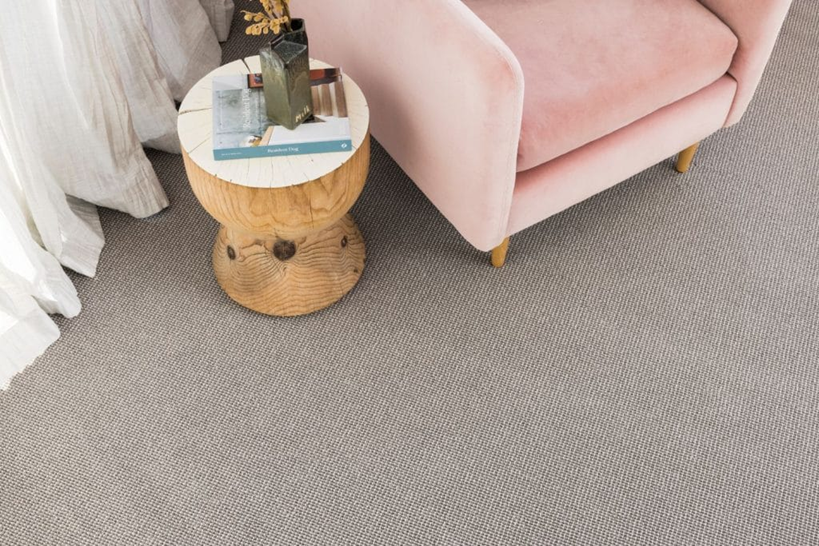Choosing the right carpet material affects your home’s comfort, durability, and overall value. While synthetic options flood the market with promises of affordability and easy maintenance, wool carpets stand out as the superior choice for homeowners who want long-term quality and natural benefits.
Your flooring decision impacts daily life more than you might realize. The material under your feet influences everything from air quality to energy bills. Wool carpets deliver advantages that synthetic alternatives simply cannot match, making them a smart investment for any space.
This guide breaks down why wool carpets outperform other materials across key categories that matter most to homeowners. You’ll learn about wool’s unique properties and how they translate into real-world benefits for your family and home.
Natural Comfort and Warmth
Wool fibers create an unmatched level of comfort that synthetic materials cannot replicate. The natural crimp in wool fibers forms tiny air pockets that provide cushioning and insulation. This structure makes wool carpets feel softer and more luxurious underfoot compared to flat, manufactured fibers.
Temperature regulation sets wool apart from other carpet materials. Wool fibers naturally adjust to room conditions, staying cool in summer and warm in winter. This adaptive quality comes from wool’s ability to absorb and release moisture while maintaining its insulating properties.
The comfort factor extends beyond just feel. Wool carpets maintain their plush texture longer than synthetic options. While nylon and polyester carpets flatten and lose their bounce over time, wool fibers spring back to their original shape, preserving that luxurious feel for years.
Durability and Longevity
Wool carpets outlast synthetic alternatives by decades when properly maintained. High-quality wool carpets can serve homes for 20-30 years, while most synthetic carpets need replacement after 5-10 years. This longevity makes wool carpets more cost-effective despite their higher upfront price.
The secret lies in wool’s natural structure. Each wool fiber consists of overlapping scales that resist wear and tear. These scales also help wool carpets maintain their appearance longer, as they prevent dirt from penetrating deep into the fiber core.
Wool’s resilience shows up in high-traffic areas where other materials fail. Hallways, living rooms, and stairs covered with wool carpets retain their shape and appearance even after years of foot traffic. Synthetic carpets in these same areas often show permanent matting and wear patterns.
Eco-Friendly and Sustainable Choice
Environmental consciousness drives many homeowners toward natural materials, and wool carpets deliver strong sustainability benefits. Wool comes from renewable sources – sheep produce new fleece annually, making wool a truly renewable resource unlike petroleum-based synthetic fibers.
The production process for wool carpets generates significantly less environmental impact than synthetic alternatives. Manufacturing nylon and polyester carpets requires energy-intensive chemical processes and releases harmful emissions. Wool processing uses traditional methods that consume less energy and produce fewer pollutants.
At the end of their lifespan, wool carpets biodegrade naturally. Synthetic carpets contribute to landfill waste for hundreds of years, while wool carpets decompose and return nutrients to the soil. This complete lifecycle advantage makes wool the clear choice for environmentally conscious buyers who want to buy carpet online with minimal environmental impact.
Superior Stain and Dirt Resistance
Wool’s natural properties provide built-in stain resistance that outperforms many synthetic options. The lanolin in wool fibers creates a protective barrier that repels liquids and prevents stains from setting quickly. This gives you more time to clean spills before they become permanent marks.
Dirt resistance comes from wool’s unique fiber structure. The scales on wool fibers prevent dirt particles from penetrating deeply into the carpet. Surface dirt stays near the top where regular vacuuming removes it effectively. Synthetic carpets with smooth fibers allow dirt to work its way down, making thorough cleaning more difficult.
Wool carpets also hide soil better than light-colored synthetic alternatives. The natural variation in wool fiber color masks light soiling, keeping carpets looking cleaner between professional cleanings. This practical benefit reduces maintenance frequency and keeps your home looking its best.
Health and Safety Benefits
Indoor air quality improves significantly with wool carpets compared to synthetic alternatives. Wool naturally absorbs common indoor pollutants, including formaldehyde and nitrogen oxides, helping purify the air in your home. Synthetic carpets often release volatile organic compounds (VOCs) that can affect sensitive individuals.
Fire safety represents another key advantage of buy carpets. Wool fibers resist ignition and self-extinguish when flame sources are removed. Synthetic carpets melt and continue burning, potentially creating toxic fumes. This natural fire resistance provides peace of mind for families prioritizing home safety.
Allergen control becomes easier with wool carpets. Despite common misconceptions, wool carpets can improve conditions for allergy sufferers by trapping allergens in their fibers until removal through vacuuming. Synthetic carpets with static charges can circulate allergens back into the air.
Better Acoustic and Thermal Insulation
Noise reduction capabilities make wool carpets ideal for multi-story homes and apartments. The dense fiber structure absorbs sound waves effectively, reducing noise transmission between floors and rooms. This acoustic benefit creates quieter, more peaceful living spaces.
Thermal insulation from wool carpets translates directly into energy savings. Wool’s natural insulating properties reduce heat loss through floors, lowering heating costs during cold months. The insulation works both ways, keeping spaces cooler in summer by preventing heat transfer from below.
These insulation benefits compound over time, making wool carpets increasingly cost-effective. While synthetic carpets provide minimal insulation value, wool carpets continue delivering energy savings throughout their extended lifespan.
How Wool Compares to Other Common Carpet Materials
Nylon Carpets
Nylon offers strong durability and stain resistance at lower initial costs than wool. However, nylon carpets typically last only 12-15 years versus wool’s 20-30 year lifespan. Nylon also lacks wool’s natural comfort, temperature regulation, and environmental benefits. Static electricity buildup in nylon carpets creates maintenance challenges that wool naturally avoids.
Polyester Carpets
Polyester provides the lowest upfront costs and decent stain resistance for budget-conscious buyers. The trade-offs include poor durability, with most polyester carpets showing wear within 5-8 years. Polyester lacks resilience, leading to permanent matting in high-traffic areas. The synthetic material offers no environmental benefits and can affect indoor air quality.
Acrylic Carpets
Acrylic carpets attempt to mimic wool’s appearance and feel while maintaining synthetic carpet pricing. While acrylic resists moisture better than wool, it falls short in durability, comfort, and environmental impact. Acrylic carpets last 8-12 years on average and lack wool’s natural benefits like air purification and temperature regulation.
Make the Smart Long-Term Investment
Wool carpets provide unmatched value through their combination of comfort, durability, and natural benefits. While synthetic alternatives may seem attractive due to lower initial costs, wool’s superior performance and longevity make it the smarter financial choice for most homes.
The decision becomes even clearer when you consider wool’s positive impact on indoor air quality, energy efficiency, and environmental sustainability. These factors create ongoing value that extends far beyond the carpet’s purchase price.
For homeowners ready to invest in quality flooring that delivers lasting comfort and performance, wool carpets represent the gold standard. The natural properties that have made wool valuable for thousands of years continue to provide advantages that modern synthetic materials cannot replicate.
Ready to experience the wool carpet difference? Explore Our Wool Carpet Collection and find the perfect natural flooring solution for your home.





